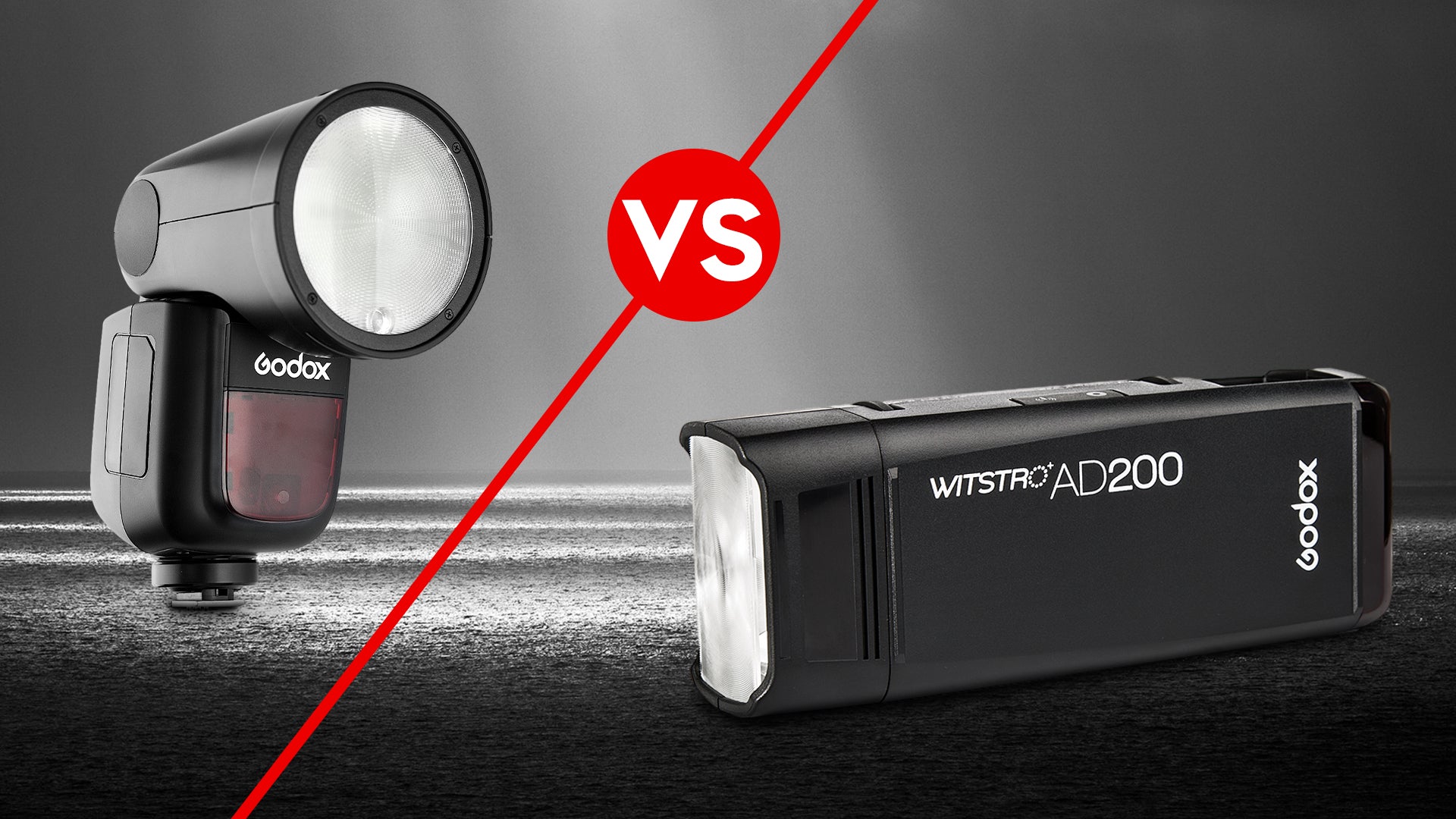A spec-by-spec breakdown of Godox ’s camera flashes
We all know that the Godox AD200 is a TTL Pocket Flash Kit suitable for Sony, Canon, Nikon, and Olympus cameras, while the Godox V1 features a round flash head. These are the primary considerations you must take into account before making a purchase.
Godox's on-camera flash series includes the Godox V1 flash, Godox TT685 Flash, and Godox V860iii flash, while their pocket camera flashes encompass models such as the Godox AD200, Godox AD200pro, Godox AD100pro, and more. Orders for all Godox camera flashes can be placed through our Insstromall store.
Before investing upwards of $349 and $259 in the Godox AD200 and Godox V1, respectively, it is important to understand the differences between these camera flashes and their excellent features. Both Godox camera flashes offer impressive specifications, but you should be aware of a couple of key distinctions."
That’s just an overview of some of the main differences between the Godox AD200 and Godox V1
|
Specs |
Godox AD200 |
Godox V1 |
|
Maximum Watt/Seconds |
200 |
76Ws output |
|
Color Temperature |
5600K (+/-200K) |
5600±200K |
|
Recycle Time |
0.01 to 2.1 sec |
Approx. 1.5 Seconds |
|
Flash Duration |
Speedlite Flash Head at t0.1: 1/220 to 1/13,000 sec Bare Bulb Flash Head at t0.1: 1/220 to 1/11,300 sec |
1/300 to 1/20000 Second |
|
Wireless Operation |
Function: Slave or Off Channels: 32 Groups: 5 (A, B, C, D, E) Range: 328' (100 m) |
Radio (TTL/Manual) Up to 328.08' / 100 m (Master, Slave) |
|
Flash Modes |
TTL, Manual, Multi (Stroboscopic) Stroboscopic: up to 90 times (99 Hz) |
Auto, Manual, Slave, TTL, Groups, ID |
|
Sync Mode |
High-speed sync up to 1/8000 sec |
High-Speed Sync 1/8000s |
|
Battery |
Lithium, 14.4 V / 2900 mAH Power remaining indicator |
1 x Rechargeable |
|
Dimensions |
6.6 x 3.0 x 2.0" (168 x 75 x 50 mm) without flash head |
3 x 7.8 x 3.7" / 76 x 197 x 93 mm |
|
Weight |
19.7 oz (560 g) without flash head and battery |
1.17 lb / 530 g (with Battery) |
The most obvious difference is the power output between the Godox AD200 and the Godox V1. The Godox AD200 boasts a power output of 200Ws, while the Godox V1 offers a lower production of 76Ws. However, the typical output power for speed lights ranges from 60 to 100 watt seconds, and the Godox V1's output power is sufficient for most users.
Furthermore, the Godox AD200 is priced at $349, whereas the Godox V1 starts at $259.
Those mentioned above are just a few of the minor differences, though. When you delve deeper into factors such as recycle time, flash duration, sync speed, battery life, and color temperature, the distinctions between the Godox camera flashes become even more pronounced.
To facilitate the decision-making process and make choosing between these camera flashes easier, we have compiled some of the most relevant features to demonstrate how they compare on paper.
Design and Size
Firstly, there is a significant difference in dimensions and weight between the Godox AD200 and the Godox V1. The Godox AD200 measures 6.6 x 3.0 x 2.0 inches and weighs 19.7 ounces, while the Godox V1 measures 3 x 7.8 x 3.7 inches and weighs 1.17 pounds. The Godox AD200 is slightly larger than the standard speedlight.
Recycle Time
The recycle time is another differentiating factor between the Godox AD200 and Godox V1 camera flashes. While both flashes have relatively fast recycle times, the Godox AD200 stands out with a recycle time ranging from 0.01 to 2.1 seconds. That enables shorter consecutive shots and reduces the waiting time between flashes. On the other hand, the Godox V1 has an approximate recycle time of 1.5 seconds. It's worth noting that the Godox AD200pro, another camera flash model, also offers a recycle time of 0.01 to 2.1 seconds.
Battery Performance
When it comes to battery performance, both the Godox AD200 and the Godox V1 utilize high-performance batteries. The Godox AD200 is powered by a 2900mAh battery, providing reliable and long-lasting power. On the other hand, the Godox V1 features a rechargeable internal battery, which is also available at our Insstromall store.
Wireless Operation System
Lastly, it is essential to highlight the wireless operation of the Godox AD200 and the Godox V1, as it provides users with greater flexibility in terms of flash placement and control. The Godox AD200 features a wireless system with a Speedlite Flash Head at t0.1: 1/220 to 1/13,000 sec and a Bare Bulb Flash Head at t0.1: 1/220 to 1/11,300 sec. Similarly, the Godox V1 offers a solid wireless system with TTL/Manual capabilities, providing a range of up to 328.08 feet.
Both camera flashes share features, such as a High-Speed Sync of up to 1/8000s and a color temperature of 5600K (+/-200K). While there may be some minor differences between the two, these are the key points to consider when comparing the wireless operation of the Godox AD200 and the Godox V1.
Related Posts:
Is the Godox AD200pro is better than the Godox v860ii?
Conclusion
If you're searching for a more powerful camera flash, the Godox AD200 is the ideal choice. Despite being slightly heavier than the Godox V1, it offers an output power of 200Ws, fast recycle time and excellent flash duration. That makes it a great device for users who enjoy outdoor activities and require a robust and reliable flash. The Godox AD200 lets photographers use modifiers and light shapers at greater distances while maintaining sufficient light intensity.
On the other hand, the Godox V1 is a lightweight and portable on-camera flash. It features a high-speed sync of 1/8000s and fast recycle time, making it suitable for on-the-go photography scenarios such as events and weddings. The Godox V1 balances compact design and powerful output, allowing you to capture real-time moments easily.

